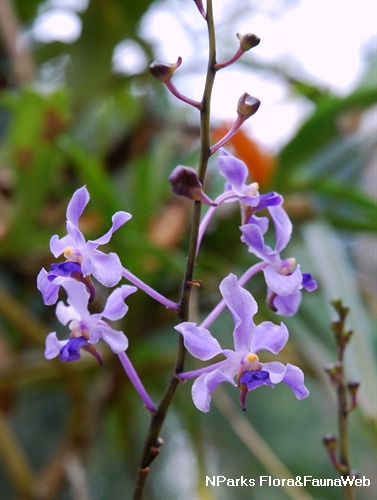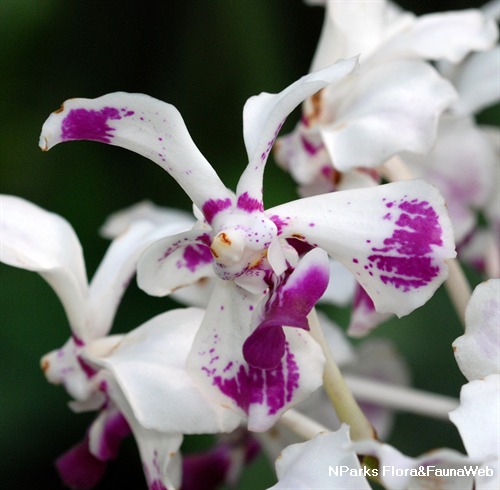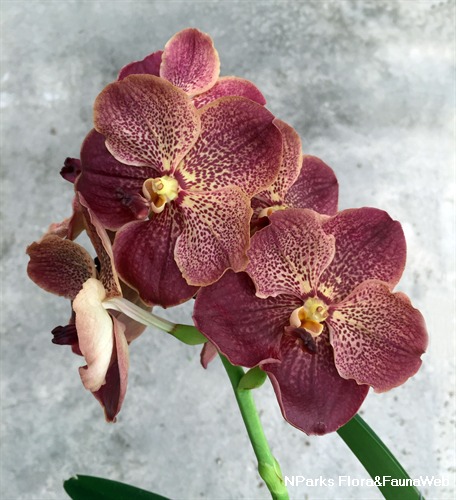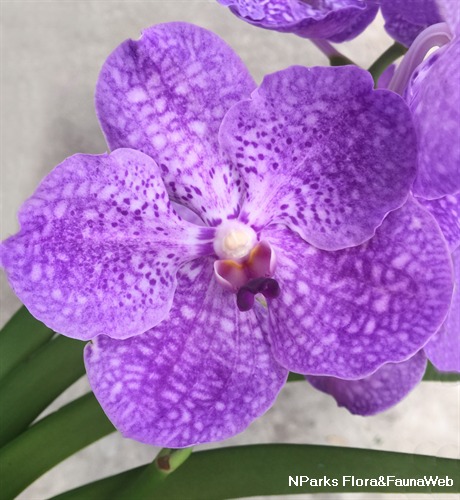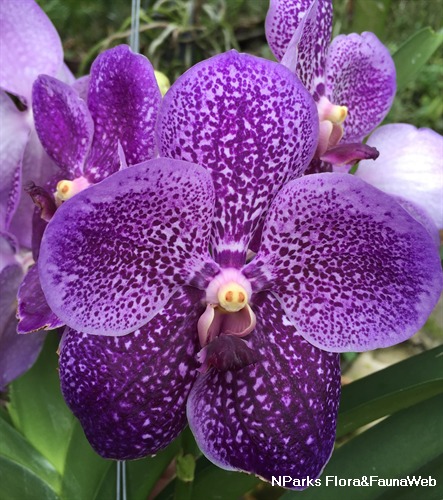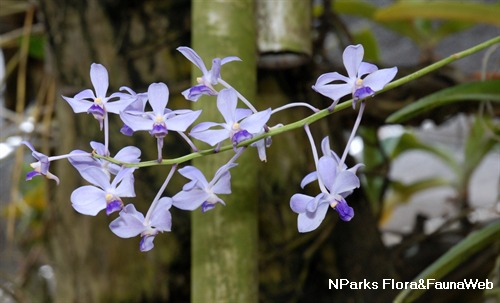
Name
Classifications and Characteristics
| Plant Division | Angiosperms (Flowering Seed Plants) (Monocotyledon) |
|---|---|
| Plant Growth Form | Epiphyte |
| Lifespan (in Singapore) | Perennial |
| Mode of Nutrition | Autotrophic |
Biogeography
| Native Distribution | India (Assam), Bangladesh, South-Central China, East Himalaya, Myanmar and Thailand. |
|---|---|
| Native Habitat | Terrestrial |
| Local Conservation Status | Non-native |
Description and Ethnobotany
| Growth Form | A monopodial epiphyte, it has an erect growth form and can grow up to 8 cm tall. |
|---|---|
| Foliage | The leaves are arranged alternately along the stem and measure between 7 to 12 cm long and 1 to 1.3 cm wide. |
| Flowers | The flowers are borne on erect, axillary inflorescences, measuring between 14 to 36 cm long and are sparsely arranged along the inflorescence. The flowers consist of pale blue sepals and petals and a purple flower lip. The sepals and petals are spathulate with an obtuse apex. |
| Habitat | It can be found on tree trunks in open forests at altitudes of 300 to 1600 m. |
| Cultivation | It is best grown mounted and hung on a piece of bark. |
Landscaping Features
| Desirable Plant Features | Ornamental Flowers |
|---|---|
| Landscape Uses | Parks & Gardens, Small Gardens, Skyrise / Balcony |
Plant Care and Propagation
| Light Preference | Semi-Shade |
|---|---|
| Water Preference | Moderate Water |
| Propagation Method | Seed |
Floral (Angiosperm)
| Flower & Plant Sexuality | Bisexual Flowers |
| Flower Colour(s) | Blue, Purple |
|---|---|
| Flower Grouping | Cluster / Inflorescence |
| Flower Location | Axillary |
| Flower Symmetry | Bilateral |
| Inflorescence Type | Raceme |
Image Repository
Others
| Master ID | 32144 |
|---|---|
| Species ID | 6550 |
| Flora Disclaimer | The information in this website has been compiled from reliable sources, such as reference works on medicinal plants. It is not a substitute for medical advice or treatment and NParks does not purport to provide any medical advice. Readers should always consult his/her physician before using or consuming a plant for medicinal purposes. |

